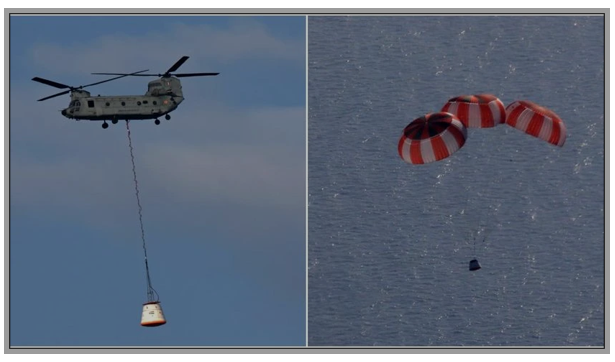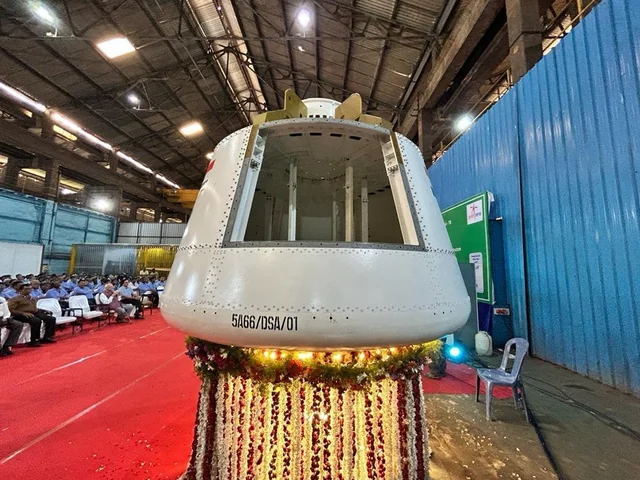SYLLABUS
GS-3: Awareness in the fields of Space; Indigenization of Technology and Developing New Technology.
Context:
Recently, the Indian Space Research Organisation (ISRO) successfully completed the first Integrated Air Drop Test (IADT-1) air drop test for the Gaganyaan Mission.
More on the News
- This marked a critical milestone in testing the parachute-based deceleration system that will ensure crew module safety during re-entry and landing.
- The successful completion of the IADT-1 test will be followed by additional test vehicle flights, including TV-D2 and the G1 mission.
- During the test, a dummy crew capsule weighing around five tonnes was lifted up through the air before being dropped using the Indian Air Force’s Chinook heavy-lift helicopter.
About the IADT-1 Test

- The IADT is a specialised trial to ensure the parachute system designed for the Gaganyaan crew module performs reliably in real-world conditions.
- In IADT-1, the parachutes were deployed in sequence to decelerate the capsule to a safe splashdown speed.
- Although the capsule was uncrewed and the drop was conducted from a helicopter, the test simulated the last stages of an actual space mission.
Significance of the test
- It demonstrates the reliability of the parachute system for safe astronaut recovery.
- It is one of the most critical safety validations, as ascent, descent, and splashdown are the riskiest phases of the mission.
Gaganyaan Mission
It is ISRO’s first human spaceflight mission, aimed at demonstrating India’s indigenous capability to send Indian astronauts into low-Earth orbit by 2027.
The mission will use the GSLV Mk-III (LVM-3) launch vehicle to carry the crew and associated modules.
It consists of two main components – the Crew Module (to carry astronauts) and the Service Module (to provide power and support using liquid propellant engines).
The programme includes two uncrewed flights (G1 & G2) – with the second carrying Vyommitra, a female humanoid robot.
- Vyommitra is equipped with the capability to monitor Module Parameters, issue Alerts and execute Life Support operations.
This will be followed by the final crewed flight (G3) carrying three astronauts for seven days in orbit at 300–400 km altitude.
With this, India will become the fourth nation after the US, Russia, and China to undertake a human spaceflight mission.

